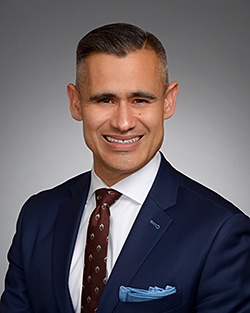
More collaboration between government, employers, and labor would help combat income inequality.
It is no secret that the United States is mired in economic inequality. Its widening wealth and income gap comes from the growing conservatism of Congress, tax policy, greater trade openness, “asset bubbles” in stock and real estate markets, and a drop in labor union membership. Although the U.S. economy generates a wealth of jobs in Silicon Valley and Wall Street that provide high incomes for many, it also increasingly produces innumerable low-wage, “gig” jobs with little capacity to sustain families or careers.
Labor activists, reformers, and law professors have spilled a lot of ink coming up with a labor law regime that might fix the inequality quagmire. In a much-discussed recent article, professor Kate Andrias advocates for a “new labor law” through which employers, worker organizations, and the state would bargain for industry- or region-wide terms and conditions of employment akin to continental, corporatist Europe. Andrias bases her argument in part on the success of the “Fight for $15” low-wage worker movement in New York, which helped establish a state tripartite wage board—one representative each from labor, management, and the public—to set minimum wages in the fast food industry.
David Madland, a senior fellow at the influential Center for American Progress, has also recently raised the wage board banner, emphasizing the link between tripartite negotiations and worker empowerment. Again citing New York’s experience, Madland argues that “wage boards will give workers a stronger voice in the economy as well as our democracy and will raise wages and help rebuild the middle class.”
Yet, despite New York’s centrifugal influence on parts of American culture, it may not be representative of the rest of the country. Outside of California, Washington State, and maybe Chicago, other tripartite or tripartite-like examples are hard to find. In addition, given the ascension of right-to-work laws and cases like Janus v. AFSCME, which sap union resources, labor’s capacity to afford these types of political pursuits going forward seems uncertain.
In a new study, we press on the question of the replicability of the tripartite structure by examining the “new labor law’s” potential in Chicago, another big “blue” jurisdiction that, in many ways, should mimic some of the collaborative progress made in New York. Although we did not find a comparable version of the “new labor law” transposed to the Midwest, we did find some key constitutive parts. Most broadly, Chicago public officials do indeed collaborate with worker representatives, including so-called “alt-labor” worker centers, to enforce and expand labor and employment rights and protections.
But if these efforts are the building blocks of tripartism, they form but a limited version. Although we identified worker representatives with workplace regulatory roles—as quasi-deputized health and safety inspectors, as wage and hour law grievance representatives, and as paid sick time policy stakeholders—the collaborative structures are missing one of the key stakeholders: management. Employers by and large do not participate in any of the processes. They are involved in workplace regulation only through their traditional roles as bosses: they act unilaterally and, at times, against labor and the government.
In addition, to the extent that multi-party collaboration plays a part in Chicago labor law enforcement, the principal engine is relational, not legal. The partnerships we identified essentially depended on public officials who were willing to engage with worker representatives. It also seemingly required a dense network of worker representatives, suggesting it may be limited to large, “blue” metropolitan areas with robust labor groups, and may be especially difficult to develop in “red,” non-union states and cities.
Indeed, Chicago’s system centers around public officials inclined to reach out and work with labor groups. We call these officials “nodes” because they sit at the heart of a collaborative network that expands when they build more “up and down” relationships with civil society. They are, in a very real sense, organizers.
Finally, we discovered that officials try to collaborate “side to side” or with other agencies that enforce workers’ rights on the local, state, and federal level. We found National Labor Relations Board (NLRB) officials working with the U.S. Equal Employment Opportunity Commission, U.S. Department of Labor, state counterparts, and the Illinois Attorney General. We even unearthed interesting collaborations between federal public officials and consular officers of various foreign governments. For example, when immigrants are afraid to seek direct employment assistance from federal or state officials, consulates can often act as trusted liaisons.
Of course, when officials acting as key nodes in Chicago’s collaborative networks retire, transfer, or are politically replaced, relationships can crumble. We saw several instances of collaborations destabilized by nodal exits, where up-and-down or side-to-side relationships stopped abruptly when a new administration materialized.
Given these realities, we support other scholars’ calls for clearer legal mandates in support of interagency and agency-civil society collaborations. To buttress such collaborations, we also advocate for stronger civil service protections for bureaucrats, as Paul R. Verkuil has suggested.
We believe our findings resonate with regulatory debates more generally. Scholars are right to argue that collaboration matters for smart regulation. But as Verkuil contends, collaboration without a robust, professional government is apt to fail.
Unfortunately, under the current Administration in Washington, D.C., we seem to be moving in the opposite direction, with even less regard for the critical work of local officials like those we found in Chicago. The new NLRB General Counsel, for example, has announced a local restructuring that would demote the agency’s regional directors and place the regional offices under a new layer of supervision based in Washington, D.C.
Ultimately, though, we are optimistic. We may not have found a “new labor law” in Chicago, but we did identify a heavily relational regime in which both officials and advocates look for hooks to work together to improve, enforce, and expand openings for new law. Figuring out the best or most realistic ways of protecting the officials who serve as nodes in this collaborative network and nurturing their relational counterparts would seem to be the next step in cementing the important progress so far.
The empirical findings discussed in this essay will be published in a forthcoming article to appear in the Berkeley Journal of Employment and Labor Law.





